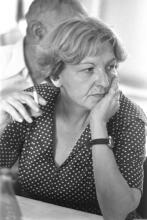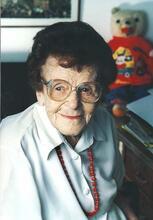Rachel Morpurgo
Rachel Morpurgo, the first Hebrew woman poet, was part of the renaissance of Hebrew poetry and literature that began at the end of the eighteenth century. Morpurgo had a strong Jewish education and also studied Italian literature and mathematics, but the emphasis in her studies and later in her writings was always on Jewish canonical texts and on the Hebrew language. She began to write Hebrew poetry at the age of eighteen and continued to write after her marriage, but only at night or on Rosh Hodesh. She wrote a variety of verse, secular and religious in tone, much in sonnet form. Her work was first published in 1847, when her cousin sent it to an influential Viennese periodical of Hebrew literature, which then featured at least one of her poems in every issue until 1856. Her poems and letters appear in book form only after her death.
An Italian Hebrew poet, Rachel Morpurgo was part of the renaissance of Hebrew poetry and literature that began at the end of the eighteenth century. In a century that produced famous women poets such as Christina Rossetti and Elizabeth Barrett Browning, she achieved great renown in Jewish scholarly circles as a Hebrew poet. While earlier Italian Jewish women poets like Sarra Copia Sullam and Devorà Ascarelli had written almost totally in Italian, Rachel Morpurgo wrote all her poems in Hebrew, and thus can be considered the first Hebrew woman poet.
Family and Education
Morpurgo was born Rachel Luzzatto on April 6, 1790, into a distinguished rabbinic and literary family in Trieste that included R. Moses Hayyim Luzzatto (1707–1746), known as the Ramhal, author of the influential Mesillat Yesharim (Path of the Upright). Ten years her junior was her cousin Samuel David Luzzatto (1800–1865), the Shadal, a famous Biblical scholar and philosopher. The two cousins, who were great sources of inspiration to each other, lived in the same house for eight years. Much of what we know of Morpurgo’s life comes from the Shadal’s writings, including his letters and his autobiography. Israeli scholar Tova Cohen attributes Morpurgo’s achievements partly to her background in Trieste, a port city in which the sociocultural environment was somewhat more open to Hebrew education for girls than elsewhere in Italy, let alone in Central and Eastern Europe.
Morpurgo had a strong Jewish education and studied with relatives and with private tutors, brought into the Luzzatto home primarily to teach Rachel’s brother, Isaac. Her studies encompassed Bible and commentaries, Lit. "teaching," "study," or "learning." A compilation of the commentary and discussions of the amora'im on the Mishnah. When not specified, "Talmud" refers to the Babylonian Talmud.Talmud (which she started learning at the age of fourteen), and Hebrew language and medieval Hebrew literature, including ethical writings such as Hovot ha-Levavot (Duties of the Heart) and Menorat ha-Ma’or (Lamp of Light). She also studied Italian literature and mathematics, but the emphasis in her studies and later in her writings was always on Jewish canonical texts and on the Hebrew language. We know from correspondence that her cousin the Shadal brought a copy of the Zohar for her in 1817, and this had a great influence on her future writings, with many of her poems dealing with themes of redemption.
In 1819, at the age of 29, she married Jacob Morpurgo, a merchant from the Trieste family of Morpurgos (the family was of Austrian origin). Although her parents were initially opposed to her choice, they eventually consented. Rachel and her husband had four children, three boys and a girl. She continued to study and to write but only at night or on The new moon; the first day of the month; considered a minor holiday, especially for women.Rosh Hodesh, which was celebrated as a quasi-holiday for women. Evidence suggests that her husband did not encourage her pursuit and took no interest in her studies or her writings. In one poem Morpurgo notes and explores the tension between her responsibilities in the house and her creative writing.
Besides her scholarly pursuits, Morpurgo had many practical skills. She learned lithography and the craft of turnery (on a lathe) from her father and uncle. She was skillful at making clothes for herself, her mother, and later her daughter.
Writings
Morpurgo began writing Hebrew poetry at the age of eighteen, but it was not until 1847, when her cousin sent her early verses to Kokhevei Yizhak (The Stars of Isaac), the influential Viennese periodical of Hebrew literature edited by R. Mendel Stern, that they were published. Indeed, until 1856, every issue of the periodical featured at least one poem by Morpurgo, some on the first page. The close relationship with her cousin, the Shadal, goes a long way to explain her achievements and renown within the patriarchal maskilic community.
After 1847 Morpurgo’s poems and letters appeared in Kokhevei Yizhak to great acclaim. Some of the letters were addressed to her cousin, some to the editor of the periodical. Nine poems by contemporary writers in honor of Morpurgo were published in Kokhevei Yizhak. But only after her death on August 23, 1871, did her poems and letters appear in book form. In 1890, the centenary of her birth, R. Vittorio (Hayyim) Castiglioni (1840–1911), the poet and scholar who became Chief Rabbi of Rome in 1903, published a collection of her works in Cracow called Ugav Rahel (Rachel’s Harp). It included letters and 50 of her poems, with a biography of the poet in Hebrew and Italian as well as an essay of his own on the position of women in Judaism. Castiglioni admired Morpurgo as “an Israelite,” as a fellow native of Trieste, and as a great poet. He considered her “a ready writer, who by her pleasant writings added beauty and glory to our holy language.” Some of the information that Castiglioni gives was obtained from Rachel Morpurgo’s daughter Perla, who also gave him some of her mother’s manuscripts, which she found only after her mother’s death.
Morpurgo wrote a variety of verse, secular and religious in tone, much in sonnet form. She wrote poems in honor of people or events, such as weddings. Several are riddles, depending on plays on words, dates, and names and on sophisticated word patterns. Many are on Jewish themes, such as yearning for the land of Israel, redemption, and Exile, and some contain images of the union of the soul with God. There are no poems of youthful yearning and no directly “feminine” poems, although in one letter to her cousin dated 1850 she adds the names of the biblical foremothers when she says “May He who blessed our forebears, Abraham, Isaac and Jacob, Sarah, Rebecca, Rachel and Leah, bless the whole community of the Congregation of Israel, and may we merit to go up to offer paschal sacrifices upon the altar,” and in a number of poems, she talks of her identity as a woman. She appears in her work as extremely modest, signing her poems “Rimah” (“worm”) as an acronym for Rachel Morpurgo ha-ketanah, the small Rachel Morpurgo. In one poem she refers to herself as a “dead dog” (see 1 Samuel 24:14 and 2 Samuel 9:8), and from her letters one can see that she may have lost some of her faith in her literary abilities. Yet she continued writing throughout her life; her last poem was written a few days before her death at the age of 81 and was left unfinished.
Legacy
Imbued from childhood with knowledge of Jewish sources and Hebrew literature, Rachel Morpurgo left a unique legacy of poetry, although in the modern revival of Hebrew she was often dismissed as a mere medievalist. Two female scholars, the American Wendy Zierler and the Israeli Tova Cohen, have done much to restore Rachel Morpurgo’s reputation and importance. Both have analyzed the poems, showing how deeply Morpurgo immersed herself in Jewish canonical sources, which she knew so well. Cohen’s comprehensive Hebrew-language book on Morpurgo’s life and work is titled “The Silenced Harp,” picking up on Castglioni. (Unfortunately the book has not yet been translated into English.) Cohen deems much of Morpurgo’s work as “palimpsistic,” i.e. the poems can be read on different levels, and the canonical texts cited by Morpurgo can, in fact, be read from a feminist perspective as protesting the marginality of women in the Jewish tradition. According to Cohen, Morpurgo expresses her female identity in many of the Hebrew poems that she wrote; she was “a woman who was not a part of the modern secular Enlightenment”(Haskalah), but rather one “who was both extremely devout and learned in Jewish canonical texts and, at the same time a woman poet of independent opinions who published her work in a maskilic (Enlightenment ) journal,” without cutting herself off from the religious world to which she certainly considered herself belonging.
Adelman, Howard. “Finding Women’s Voices in Italian Jewish Literature.” In Women of the Word: Jewish Women and Jewish Writing, edited by Judith Baskin, 62–65. Detroit: Wayne State University Press, 1994.
Berlowitz, Yaffa. “Rachel Morpurgo: Hatshuka el hamavet, hatshuka el hashir: Letiva shel hameshoreret haivrit harishona.“ In Sadan: Mekhkarim be’sifrut ivrit Bet (1996): 11-40. [Hebrew]
Breger, Jennifer. “Three Women of the Book: Judith Montefiore, Rachel Morpurgo and Flora Sassoon.” AB Bookman’s Weekly 101 (March 30, 1998): 853–864.
Castiglioni, Hayyim Isaac. Ugav Rahel: Shirim ve-Iggrot u-Mikhtavim Shonim. Cracow: 1890 (reprinted by Y. Zamora, Tel Aviv: 1943). [(Hebrew]
Cohen,Tova. Ugav Ne’elam: Hayyeha ve-yetziratah shel ha-meshoreret ha-ivriya- italkiya Rachel Morpurgo. Jerusalem: Carmel, 2016. [Hebrew]
Cohen, Tova. “The Power of Writing from the Margins: Assessing Rachel Morpurgo, the First Hebrew Women Poet.” Prooftexts 38 (2020): 409-432.
Hecht, Louise. "Das 'Phänomen' Rachel Luzzatto /Morpurgo (1790-1871)." Trumah 16 (2006): 127-195.
Kobler, Dora. Four Rachels. London: Education Department of the Federation of Women Zionists, 1947.
Levine Katz, Yael. “Rachel Morpurgo.” Judaism 49 (Winter 2000): 13–29.
Salaman, Nina. Rachel Morpurgo and the Contemporary Hebrew Poets in Italy. London: Allen & Unwin, 1924.
Zierler, Wendy. And Rachel Stole TheIdols: The Emergence of Modern Hebrew Women’s Writings. Ann Arbor, MI: University of Michigan Press, 2004.
Zierler, Wendy. Shir Hadash“Going Out in Knots“: A Kaddish COVID Journal and Poems (forthcoming).
Zierler, Wendy. “The Rabbi’s Daughter in and out of the Kitchen. ” Nashim 5 (2002).
Zierler, Wendy. ‘“‘Look What I’ve Found‘ said Kohelette.“ CCAR Journal: The Reform Jewish Quarterly Spring 2019.
For a complete listing of Morpurgo’s writings in Kokhevei Yizhak see Wachstein, Bernhard. Die Hebraische Publizistik in Wien, vol. 1, Vienna: 1930, 151–153.






